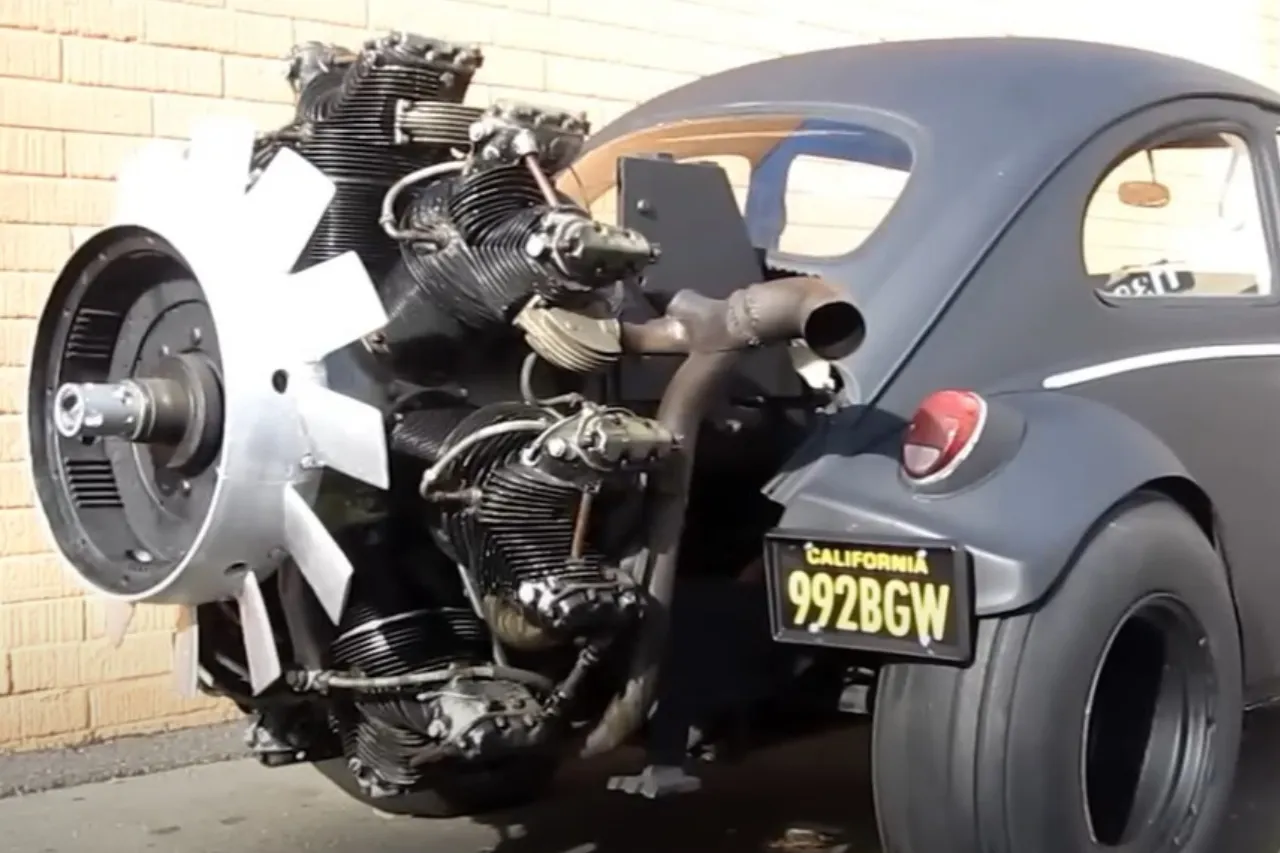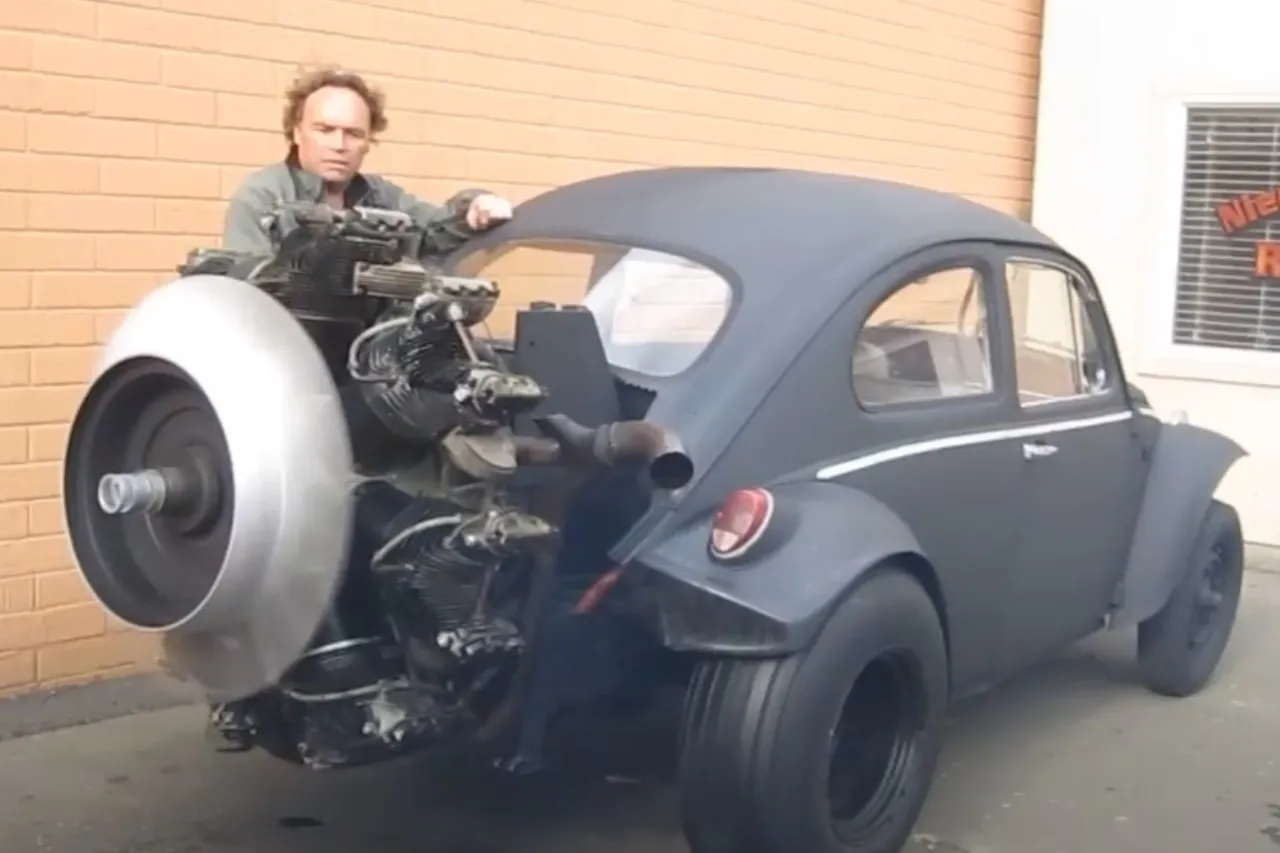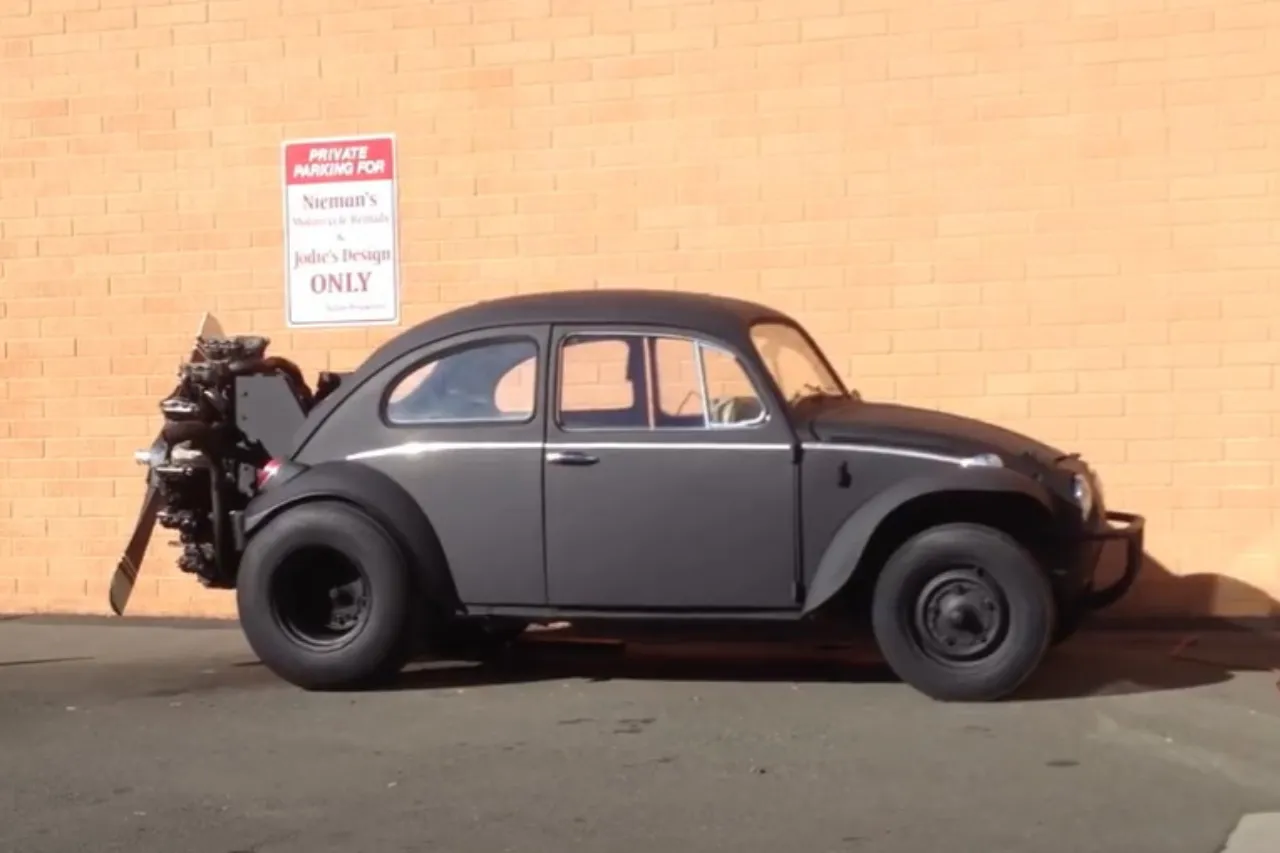If there is a car that has transcended generations, overcome challenges and still inspires bold projects, that car is the VW Beetle. A symbol of resilience and creativity, the Beetle continues to be the stage for impressive transformations. Now, imagine combining this road legend with a radial engine that once powered tanks and planes in World War II. Sounds impossible? In the United States, mechanic and enthusiast Mike Nieman has proven that it isn't.
The Unusual Project: Beetle with W670 Radial Engine

In the wilds of California, Nieman transformed a classic Beetle into something straight out of a science fiction movie. The traditional boxer engine was replaced with a W670, a radial engine of seven cylinders originally used in M2 tanks and World War II aircraft. This engine is capable of delivering impressive 220 hp, something almost unimaginable for a conventional Beetle.
The W670 engine weighs 211 kg, representing almost a quarter of the total weight of a national Beetle, which reaches 820 kg. To support this robust powertrain, the car's rear structure was completely reinforced, a challenge Nieman shared in detail on his YouTube channel.
The Beetle's Relationship with World War II
It may seem strange to associate the Beetle, an icon of simplicity and economy, with World War II. However, history reveals that the car has roots very close to that dark period. Ferdinand Porsche, creator of the Beetle, developed light military vehicles during the war, such as the Wheelbarrow, a sturdy jeep, and the Schwimmwagen, amphibious vehicle based on Beetle components.
Before the outbreak of war in 1939, Porsche was already working on prototypes of what would become the people's car. These vehicles had a rear-mounted four-cylinder engine and automatic transmission – an innovation for the time. It was only after the war, however, that the Beetle took on the form that would make it a global success.
The Beetle in Brazil: A Chapter of Success
The Beetle's journey in Brazil began in January 1959, when the first national model was produced in São Bernardo do Campo, São Paulo. Before that, the Beetle, known as Volkswagen Sedan, was assembled in Brazil with parts imported from Germany.
Over the following decades, the Beetle became part of the lives of millions of Brazilians, with iconic versions such as the Super Beetle 1600S, which had an engine 1.6 boxer 65 hp in the 1970s. Although the performance of the traditional Beetle is far from competing with the W670 engine used by Nieman, this sporty version already demonstrated the versatility of the model.
Extensive Transformations: From Subaru Engines to the W670

It is not uncommon to find Beetles equipped with engines Subaru Boxer, capable of delivering more than 200 hp. These modifications are already impressive, but Nieman's project goes further, combining the lightness and reduced weight of the Beetle with the power of an engine designed for military machines.
The result is a true mechanical masterpiece, where a car that was born to be economical and practical is transformed into a beast capable of rivaling many modern sports cars.
The Radial Engine: World War II Technology
The W670 engine used in Nieman's design was originally developed for M2 tanks, which played a crucial role in the Allied forces during World War II. The engine also powered aircraft such as light bombers, demonstrating its versatility and reliability in extreme situations.
With seven cylinders arranged radially, the W670 offers a unique power delivery and a sound reminiscent of the war machines of the 1940s. Adapting this engine to a Beetle required creativity and advanced engineering, something Nieman passionately documented.
The Magic of the Beetle: Unparalleled Versatility
What makes the Beetle so special is its ability to transform itself. Whether as an economy passenger car, a custom sports car, or an experimental machine like Nieman's, the Beetle is a true automotive chameleon.
Projects like this make us reflect on how the simplicity of the original Beetle is what allows for its incredible versatility. After all, few cars in the world can boast the feat of carrying an engine that powered tanks.
How Much Does a Project Like This Cost?

While Nieman hasn't revealed the total cost of his creation, we can make some estimates. A restored W670 radial engine could cost around US$ 20 thousand, or about R$ 100 thousand at the current price. In addition, structural reinforcements, adjustments and other modifications certainly add other R$ 50 thousand or more to the project.
These figures, however, pale in comparison to the uniqueness and impact of this Beetle. For classic and custom car enthusiasts, a project like this is truly priceless.
Conclusion: A Legend That Never Dies
You, a car lover, know that beetle is more than just a vehicle. It is a symbol of ingenuity, simplicity and innovation. Mike Nieman's design, which combines the history of the Beetle with the power of a military engine, is proof that there are no limits to creativity.
Whether as an icon of economy or as a machine 220 hp Ready to roar, the Beetle continues to surprise us. And you, have you ever imagined what you would do with a classic Beetle? Who knows, maybe a radial engine could be the next step in your own creation?









